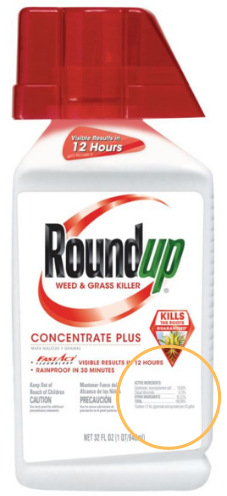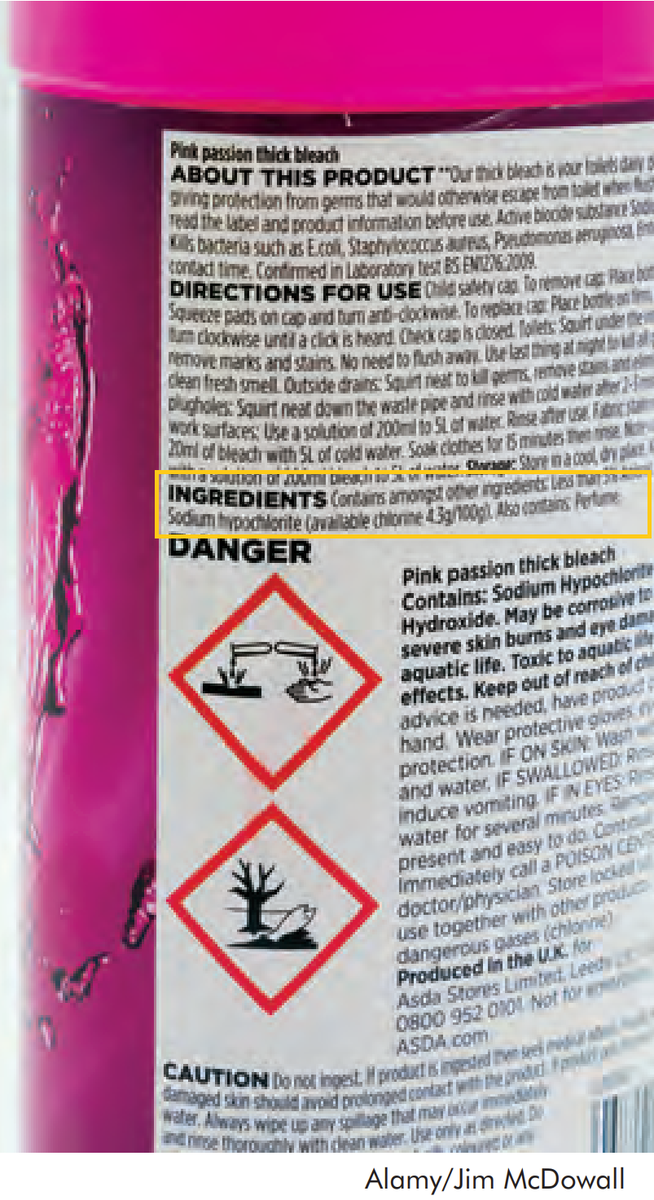Gateway on Pesticide Hazards and Safe Pest Management
How To Find Ingredients in Pesticide Products
Beyond Pesticides offers resources below to evaluate the health and ecological effects of specific chemical exposure from ACTIVE INGREDIENTS in pesticide products, as well as regulatory information and supporting scientific documents. Because various pesticide products can contain more than one active ingredient, it is important to READ the LABEL to determine chemical components.
With 192 different active ingredients and counting, it is essential to establish the connection between the use of these chemicals and their respective hazards.
View the step-by-step guide on how to search for the active ingredient(s) in pesticide products below:
- Go to U.S. EPA's Pesticide Product and Label System and enter the product name. The generic product name may vary.
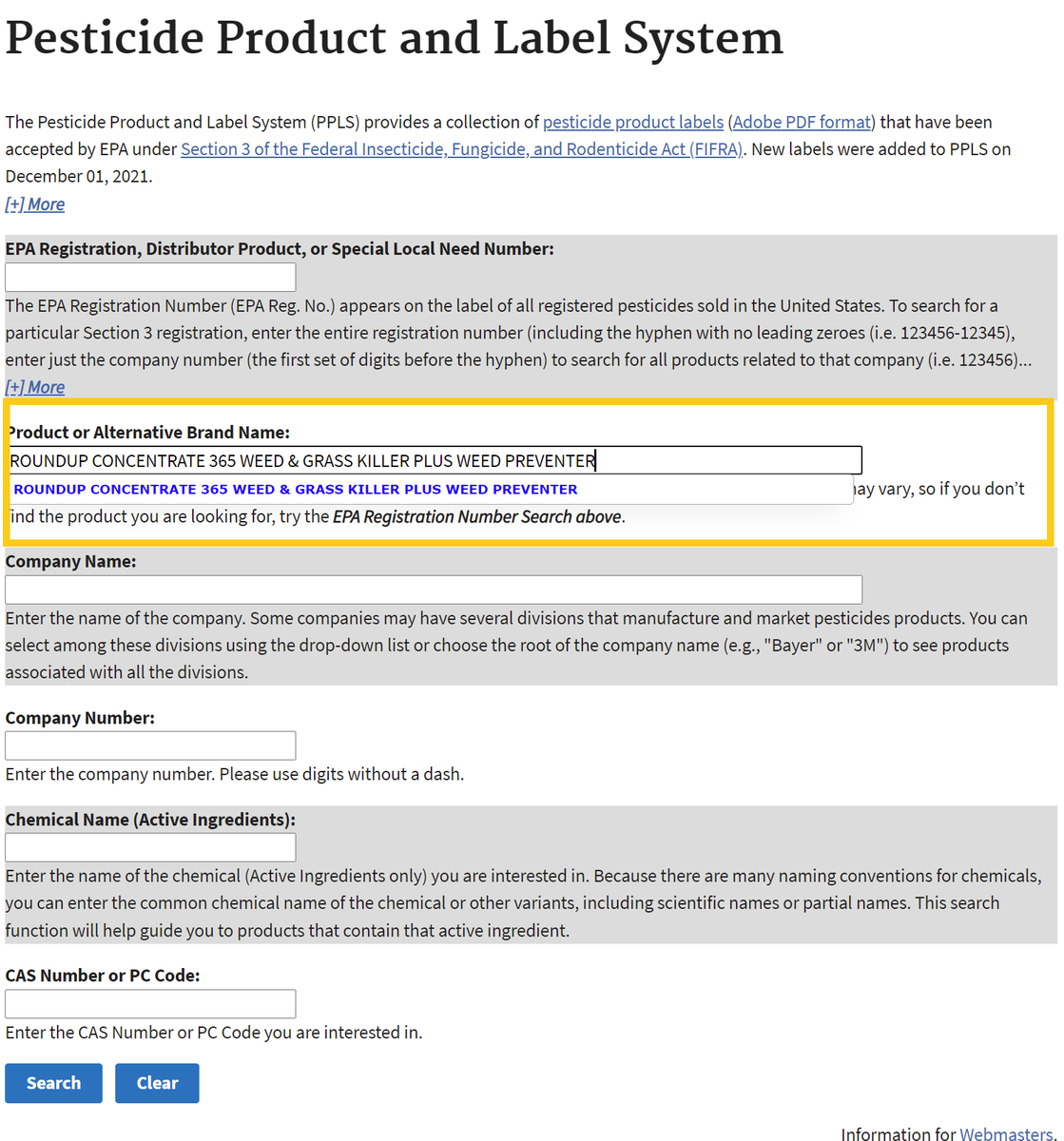
- After searching, click on the chemical ingredients tab or the link for the most recent label to find Active Ingredients.
Chemical List Label List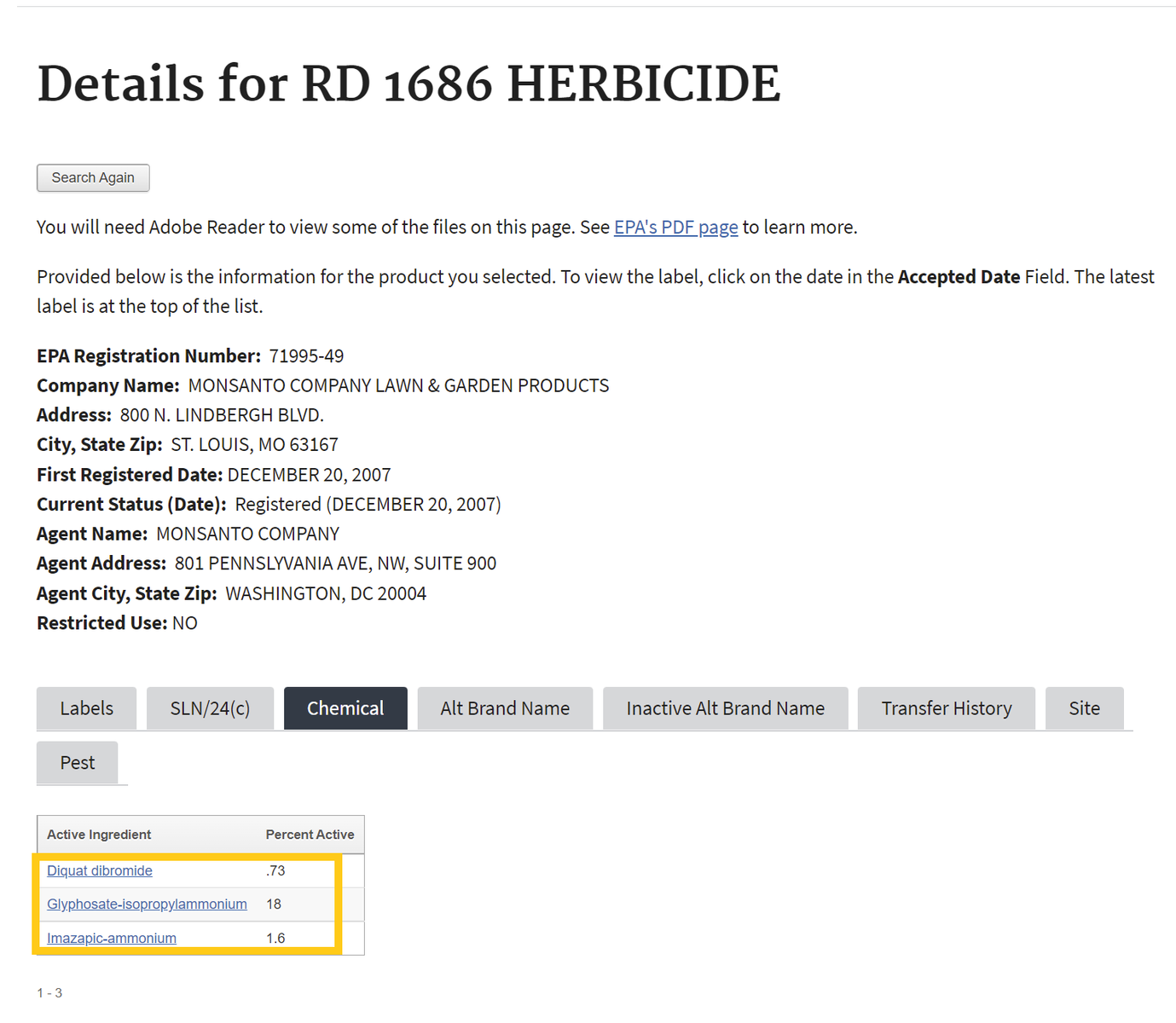
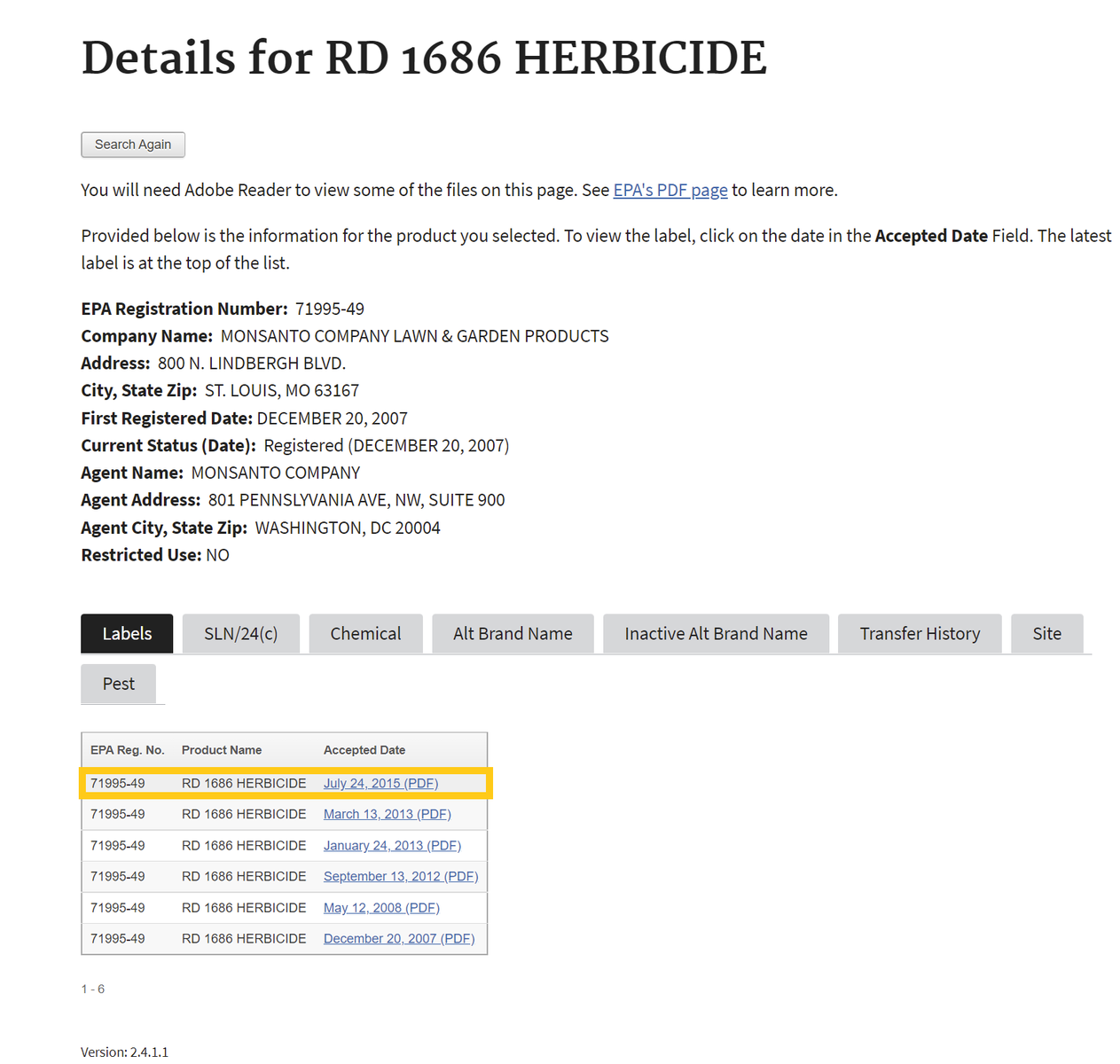
If one selects the chemical ingredients tab, skip to Step 4 . If not, proceed to step number 3 - To find the active ingredient(s) on the label, search for the page in the document containing the date of registration. Usually, the active ingredients section occurs within the first few pages of the label document.
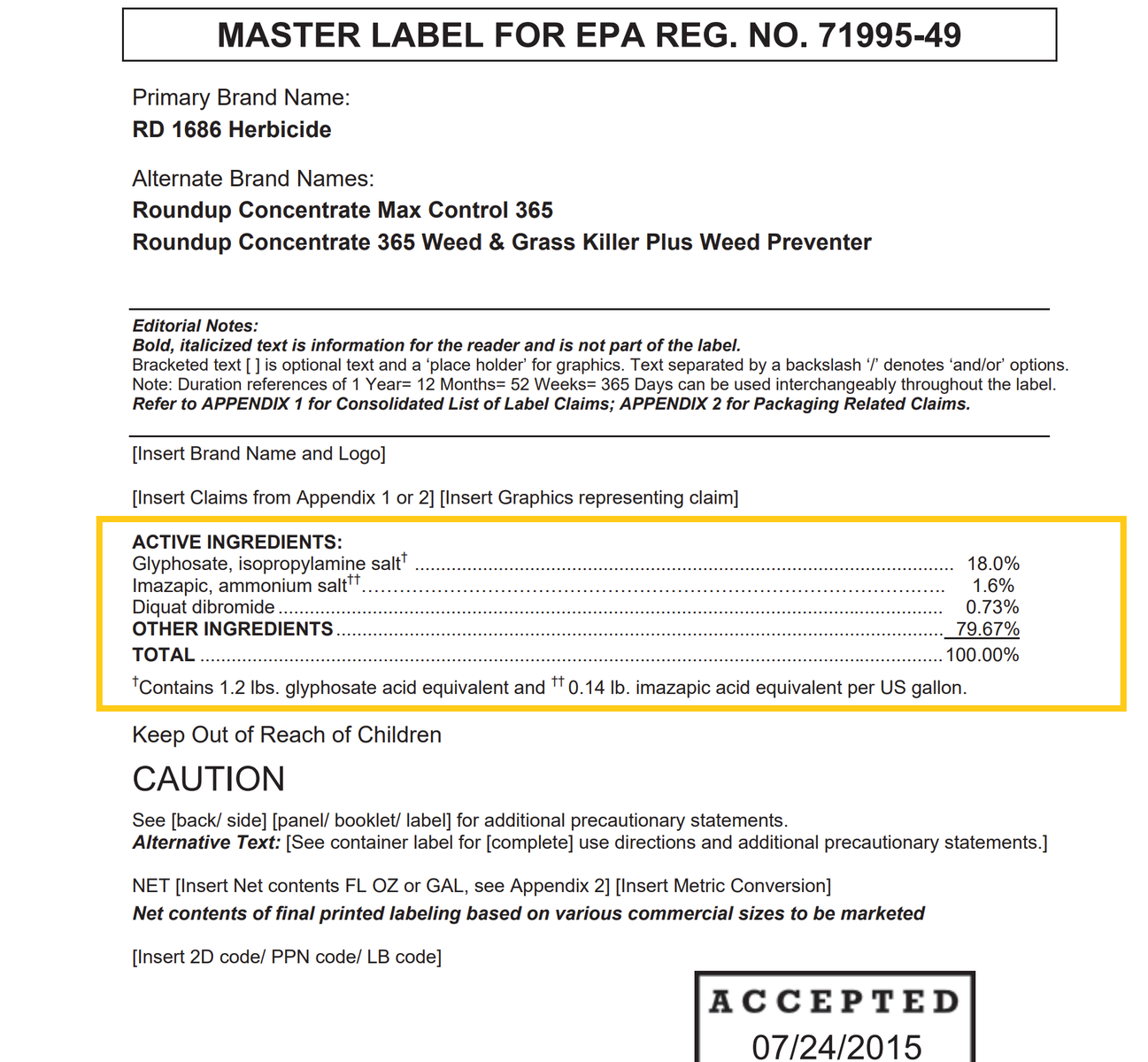
- Return to the Beyond Pesticides Gateway and search for the active ingredient name in the yellow box to the right or from the list below.
Dimethoate
General Information
- Product Names:
- Chemical Class: Organophosphate insecticide
- Uses: Alfalfa, asparagus, beans , broccoli, Brussels sprouts, cauliflower, celery, cherries, Christmas tree farms, conifer seed farms, cotton, endive, field corn, grass grown for seed, herbaceous ornamentals in commercial nurseries or greenhouses, grapefruit, leaf lettuce (except head lettuce), lemons, lentils, kale, melons, mustard greens, oranges, pears, peas, pecans, peppers, popcorn, potatoes, safflower, sorghum, soybeans, Swiss chard, tangerines, tangelos, tomatoes, turnips, watermelons, wheat, cottonwood grown for pulp, and woody ornamentals in commercial nurseries or greenhouses.
- Alternatives: Organic agriculture, Organic christmas trees
- Beyond Pesticides rating: Toxic
Health and Environmental Effects
- Cancer: Possible (10)
- Endocrine Disruption: Suspected (PAN)
- Reproductive Effects: Yes (33)
- Neurotoxicity: Yes (4)
- Kidney/Liver Damage: Yes (14)
- Sensitizer/ Irritant: Yes (8)
- Birth/Developmental: Yes (14)
- Detected in Groundwater: Possible (33)
- Potential Leacher: Yes (4)
- Toxic to Birds: Yes (4, 8)
- Toxic to Fish/Aquatic Organisms: Yes (4, 8)
- Toxic to Bees: Yes (4, 8)
Residential Uses as Found in the ManageSafe™ Database
Additional Information
- Regulatory Status:
- Supporting information:
- Daily News Blog entries (Beyond Pesticides)
- Extoxnet Dimethoate Factsheet (Extension Toxicology Network)
- PAN Pesticides Database:Dimethoate (Pesticide Action Network)
- Scorecard Dimethoate Factsheet (Environmental Defense Fund)
- CAT Dimethoate Toxicological Profile (Californians for Alternatives to Toxics)
- Studies:
- Top 15 Farmworker Poison
- Assessment of genetic effects and pesticide exposure of farmers in NW Greece. Moshou, H., Karakitsou, A., Yfanti, F., Hela, D., Vlastos, D., Paschalidou, A.K., Kassomenos, P. and Petrou, I., 2020. Environmental Research, p.109558.
- Hypospadias and residential proximity to pesticide applications.. Carmichael SL, Yang W, Roberts EM, et al. 2013. Pediatrics. 132(5):e1216-26
- Mixture effects of thiamethoxam and seven pesticides with different modes of action on honey bees (Aplis mellifera). Li, W. et al. (2023) Mixture effects of thiamethoxam and seven pesticides with different modes of action on honey bees (Aplis mellifera), Scientific Reports. Available at: https://www.nature.com/articles/s41598-023-29837-w#ref-CR30.
- Pre-Conception And First Trimester Exposure To Pesticides And Associations With Stillbirth. Furlong, M. et al. (2024) Pre-conception and first trimester exposure to pesticides and associations with stillbirth, American Journal of Epidemiology. Available at: https://academic.oup.com/aje/advance-article-abstract/doi/10.1093/aje/kwae198/7714541.
- Genotoxicity and Adverse Human Health Outcomes Among People Living Near Highly Polluted Waste Water Drains in Punjab, India. Thakur, J. et al. (2008) Genotoxicity and Adverse Human Health Outcomes Among People Living Near Highly Polluted Waste Water Drains in Punjab, India, Epidemiology. Available at: https://journals.lww.com/epidem/fulltext/2008/11001/genotoxicity_and_adverse_human_health_outcomes.867.aspx.
- Unveiling bee pollen's contamination with pesticides and mycotoxins: Current analytical procedures, results and regulation. Carrera, M. et al. (2024) Unveiling bee pollen’s contamination with pesticides and mycotoxins: Current analytical procedures, results and regulation, Trends in Analytical Chemistry. Available at: https://www.sciencedirect.com/science/article/abs/pii/S0165993624004187.
- Pesticide-Induced Inflammation at a Glance. Lopes-Ferreira, M. et al. (2023) ‘Pesticide-induced inflammation at a glance’, Toxics, 11(11), p. 896. doi:10.3390/toxics11110896.
- Prenatal residential proximity to endocrine disrupting agricultural pesticides and menstrual cycle characteristics among Latina adolescents in California. Paul, J. et al. (2025) Prenatal residential proximity to endocrine disrupting agricultural pesticides and menstrual cycle characteristics among Latina adolescents in California, American Journal of Epidemiology. Available at: https://academic.oup.com/aje/advance-article/doi/10.1093/aje/kwaf059/8083004.
- Effect of dimethoate administration schedules on compensatory ovarian hypertrophy, follicular dynamics, and estrous cycle in hemicastrated mice. Mahadevaswami, M. P., & Kaliwal, B. B. (2002). Effect of dimethoate administration schedules on compensatory ovarian hypertrophy, follicular dynamics, and estrous cycle in hemicastrated mice. Journal of basic and clinical physiology and pharmacology, 13(3), 225–248. https://doi.org/10.1515/jbcpp.2002.13.3.225
- Maternal exposure to the mixture of organophosphorus pesticides induces reproductive dysfunction in the offspring. Yu, Y., Yang, A., Zhang, J., & Hu, S. (2013). Maternal exposure to the mixture of organophosphorus pesticides induces reproductive dysfunction in the offspring. Environmental toxicology, 28(9), 507–515. https://doi.org/10.1002/tox.20741
- Pesticide use and risk of Hodgkin lymphoma: results from the North American Pooled Project (NAPP). Latifovic, L., Freeman, L. E. B., Spinelli, J. J., Pahwa, M., Kachuri, L., Blair, A., Cantor, K. P., Zahm, S. H., Weisenburger, D. D., McLaughlin, J. R., Dosman, J. A., Pahwa, P., Koutros, S., Demers, P. A., & Harris, S. A. (2020). Pesticide use and risk of Hodgkin lymphoma: results from the North American Pooled Project (NAPP). Cancer causes & control : CCC, 31(6), 583–599. https://doi.org/10.1007/s10552-020-01301-4
- Case fatality of agricultural pesticides after self-poisoning in Sri Lanka: a prospective cohort study. Buckley, N. A., Fahim, M., Raubenheimer, J., Gawarammana, I. B., Eddleston, M., Roberts, M. S., & Dawson, A. H. (2021). Case fatality of agricultural pesticides after self-poisoning in Sri Lanka: a prospective cohort study. The Lancet. Global health, 9(6), e854–e862. https://doi.org/10.1016/S2214-109X(21)00086-3








.png)
